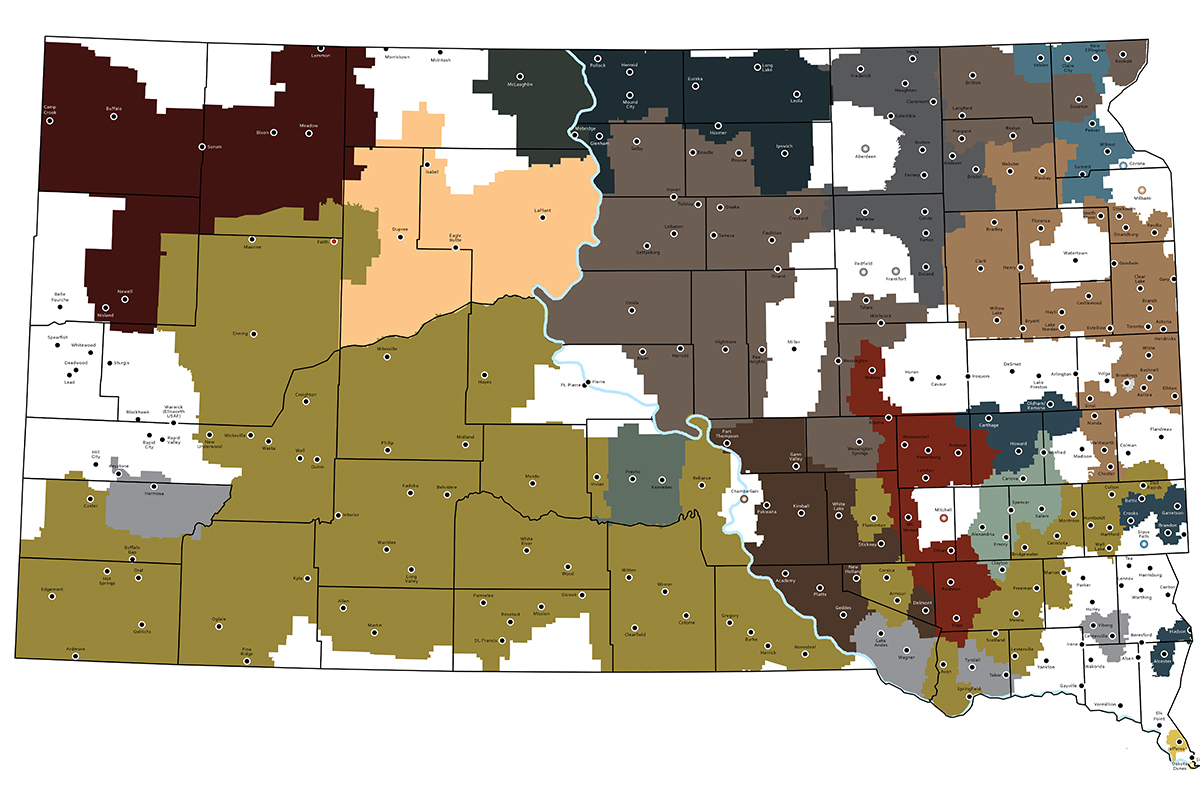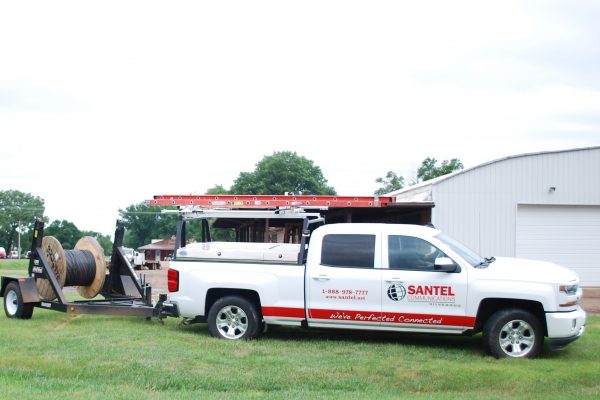
If you do online banking, access your health chart or apply for a hunting license on your phone or computer, you’re most likely using the SDN Communications network.
The network is one of the most robust in the nation thanks to investments from SDN and its member companies, as well as grant dollars and funds from the state and federal governments. Since it was launched in 2019, the ConnectSD program has invested more than $58 million and leveraged an additional $89 million in federal funds and $122 million in private investment for fiber internet expansion projects across the state.
South Dakota legislators heard those facts and more from SDN Communications CEO Ryan Punt and other representatives from SDN and the South Dakota Telecommunications Association at a luncheon before the 2024 session.
Here are five things about SDN Communications and the telecommunications industry that legislators learned:
1. The evolution of SDN Communications
A little over 30 years ago, landlines drove the formation of SDN Communications. It’s hard to imagine telephones having such importance now, but rural telephone companies wanted a central point for voice services, and SDN was born in 1989. Providing access to good long-distance rates and toll-free services accounted for SDN’s entire revenue stream in 1992; today that revenue is less than 1%.
SDN Communications’ 17 member companies cover more than 90% of South Dakota’s land mass; of that, 93% of the territory has fiber internet, Punt said. Those member companies include 12 cooperatives, three municipalities, one tribal-owned company and one family-owned company.

The white space on the coverage map above shows areas that are still unserved, underserved or are not served by SDTA or SDN members. The largest underserved area is primarily in the Black Hills. Getting broadband coverage in this area is geographically difficult because of the bedrock as well as the red tape that comes with building in a national forest, SDTA General Counsel and Executive Director Kara Semmler said.
“The SDN members and SDTA have expanded outside of their incumbent service areas. What is left are some of the most challenging, most costly locations to provide access to,” she said.
2. What SDN does for its customers and member companies
At its core, SDN provides an exceptional experience for its member companies through centralizing cable TV and internet services for them, Punt said.
All ISP services are centralized at SDN, and that data is then pushed out to each member, which delivers to their consumers in their service area across South Dakota. SDN works with companies that provide streaming and cache updates from the content provider on their servers. Thus, consumers have a better streaming experience because they don’t have to deal with lag time.
SDN also provides fiber internet directly to businesses in cities and towns across South Dakota. It serves a variety of verticals from agriculture to government to healthcare and beyond.
“Our goal is to help consumers stay where they want to live,” Punt said. “Our hope is that more people will stay and invest in rural communities with the ability to work from anywhere.”
3. How the internet has evolved with education
Education is one of seven enterprise spaces that SDN serves. The number of K-12 districts that use SDN’s network (120) and students (112,000-plus) is more than 90% of the state.
Here’s a comparison of internet availability today vs. the late 1990s: former Gov. Bill Janklow pushed to have a T1 internet line to every school in the state. A T1 line is 1.54 megabytes per second and 1,000 megabytes is equal to 1 gigabytes. Today’s standard for internet speed is 25 Mbps for downloads and 3 Mbps for uploads.
Janklow saw the benefit of connecting education with technology. Today, online education is more robust as is the use of technology in higher education.

4. What’s driving bandwidth growth and how does SDN prepare?
You don’t build a church for Easter Sunday, but you do build a broadband network for the Super Bowl. Or even a regular Thursday night football game when the only way to watch it is via a streaming service.
NFL streaming is huge. Or as Alliance Communications CEO Ross Petrick stated: “Our bandwidth doubles. It’s like preparing for the Sturgis rally every Thursday night.”
Streaming video has been a game changer in boosting bandwidth growth. A service like Netflix offering television shows and movies can cache its programming, which SDN works with content providers to do. But live football can’t be cached, and more people are now streaming YouTube TV because they distribute the NFL Network.

A perfect storm hit in December 2022 — there was literally a snowstorm that canceled school and closed the interstates, and it was a Thursday night so everyone was home, leading to a major spike on the SDN network.
When workers were sent home and students had remote learning in 2020, SDN’s network was ready for additional use. That’s because SDN engineers are constantly upgrading it ahead of increased demands in the future, Punt said.
5. How fiber internet powers cell phones
Is the wireless phone industry truly wireless? Technically, yes, Punt said, cell phones are wireless from the phone to the tower. When it gets to the tower, however, fiber comes into play. Fiber is used to transmit voice and data packets from the tower to the Mobile Telephone Switching Office (MTSO).
Major mobile carriers in South Dakota rely on the SDN network.
What’s next for SDN Communications?
With cloud-based services, new applications, more streaming services, artificial intelligence and quantum computing, there is no end in sight for the growth of bandwidth.
“We’re always working to prepare the network for the next several years and beyond to anticipate tomorrow's demand,” said Ryan Dutton, Vice President of Sales & Marketing for SDN.
SDN’s capital budget has been on the rise for infrastructure and facility updates, Punt said. Several broadband infrastructure projects funded through previous legislative sessions and federal programs are underway or will start in 2024.
“We have an unlimited amount of bandwidth (with our fiber),” Punt said. “Where the investments need to come is through growth to meet the demands of consumers from members, and our enterprise customers.”




